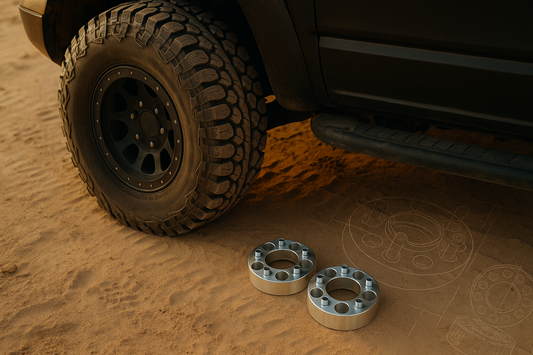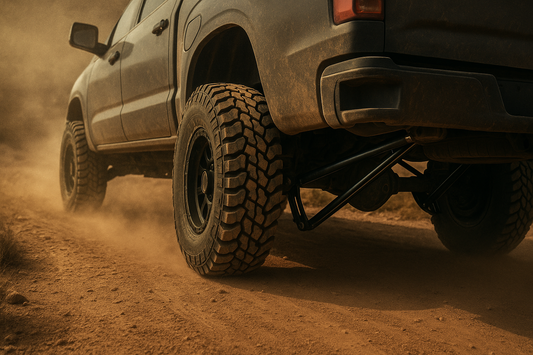When it comes to any vehicle upgrade, safety is the first thing that should be on your mind—and wheel spacers are no exception. You've probably heard mixed opinions, but the truth is simple:
Yes, wheel spacers are safe— as long as you’re using the right kind, installing them properly, and maintaining them over time.
Let’s break down what they are, why people use them, and what’s fact vs. fiction when it comes to spacer safety.
What Are Wheel Spacers, Exactly?
Wheel spacers are components that sit between your hub and wheel. Their job? To create extra clearance by pushing the wheels outward from the hub assembly. This can change the offset, giving your vehicle a wider, more aggressive stance—and sometimes even solving clearance issues with larger tires or upgraded brakes.
Why Use Wheel Spacers?
While many use wheel spacers to improve the look of their truck, there’s more to it than aesthetics:
- Improved handling: A wider track can offer better stability and reduce body roll, especially during turns.
- More clearance: Great for fitting larger tires or aftermarket brake kits.
- Better stance: They can help align your wheels more flush with your fenders for a cleaner, more aggressive look.
Types of Wheel Spacers
There are two common types:
- Lug-centric spacers: Slide onto existing studs. These must be centered carefully, or they can lead to vibration issues.
- Hub-centric spacers: Designed to fit snugly over the hub, creating a more secure and balanced connection. These are usually the safer, more reliable option.
Always choose a spacer that’s made for your vehicle’s exact bolt pattern and size requirements.
Myths About Wheel Spacer Safety—Debunked
-
❌ “Wheel spacers cause your wheels to fall off.”
Not true. If your wheels are falling off, it’s likely due to improper installation or using cheap, ill-fitting spacers—not the concept of spacers themselves. -
❌ “Spacers ruin your suspension.”
False. A properly sized spacer won’t harm your suspension. Problems usually arise from incorrect size or fitment, not the spacer itself. -
❌ “They wear out wheel bearings.”
Nope. When installed properly, spacers won’t put excessive stress on bearings. The issue comes when you use the wrong offset or neglect maintenance. -
❌ “They cause vibration at high speeds.”
Only if they’re not hub-centric or installed poorly. Hub-centric spacers virtually eliminate this problem when torqued correctly. -
❌ “They’re just for looks.”
Far from it. While they do enhance visual appeal, spacers can also provide functional clearance and performance improvements.
Tips for Safe Wheel Spacer Use
Safety with spacers comes down to quality, fitment, and attention to detail. Here’s how to stay in the clear:
- Use a torque wrench: Always tighten to the manufacturer’s recommended spec—never over-tighten.
- Apply thread locker: Medium-strength thread locker helps prevent bolts from loosening under stress.
- Re-check torque regularly: Especially after the first 50–100 miles and during routine maintenance.
- Stick with hub-centric spacers: They’re built to align perfectly with your vehicle’s hub, minimizing risk.
- Choose the right size: Don't guess—match your spacer to your wheels, tire setup, and overall build.
Bottom Line: Wheel Spacers Are Safe—If You Do It Right
When installed properly and maintained, wheel spacers can be a great addition to your truck—both for performance and appearance. The key is sticking with quality components and following proper install practices.
At LT33 Truck Parts, we only carry parts we trust to perform. If you're considering spacers for your build, our team can help you choose the right type and size—shipped straight to your door with no hassle.



